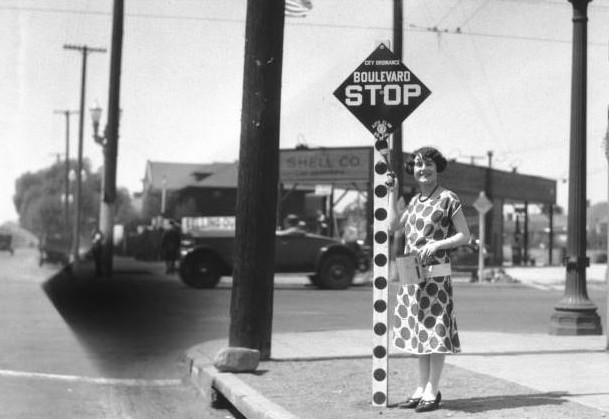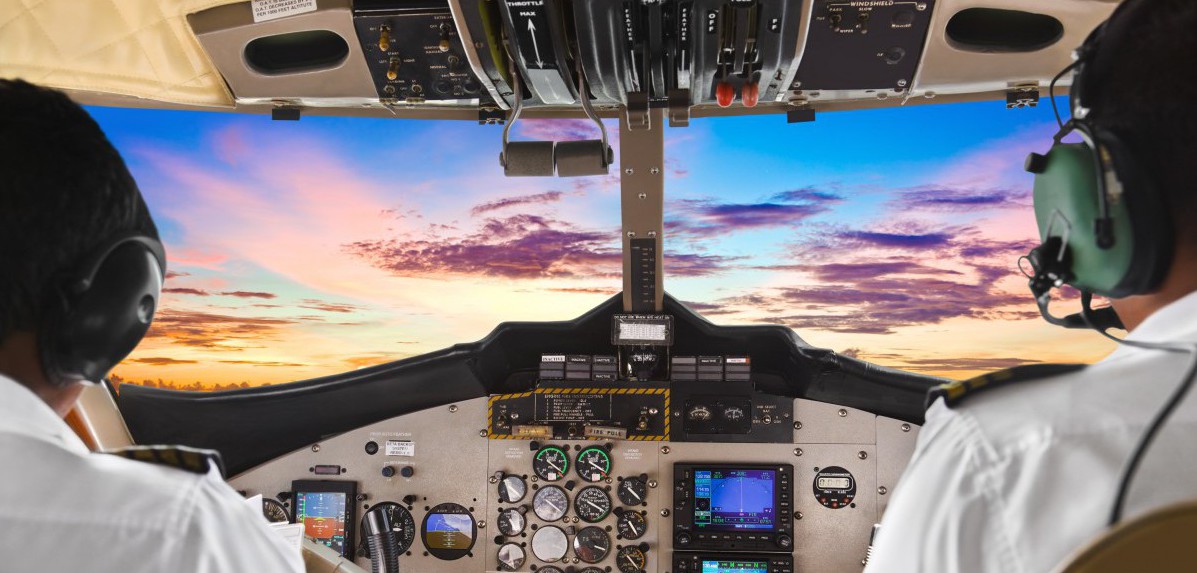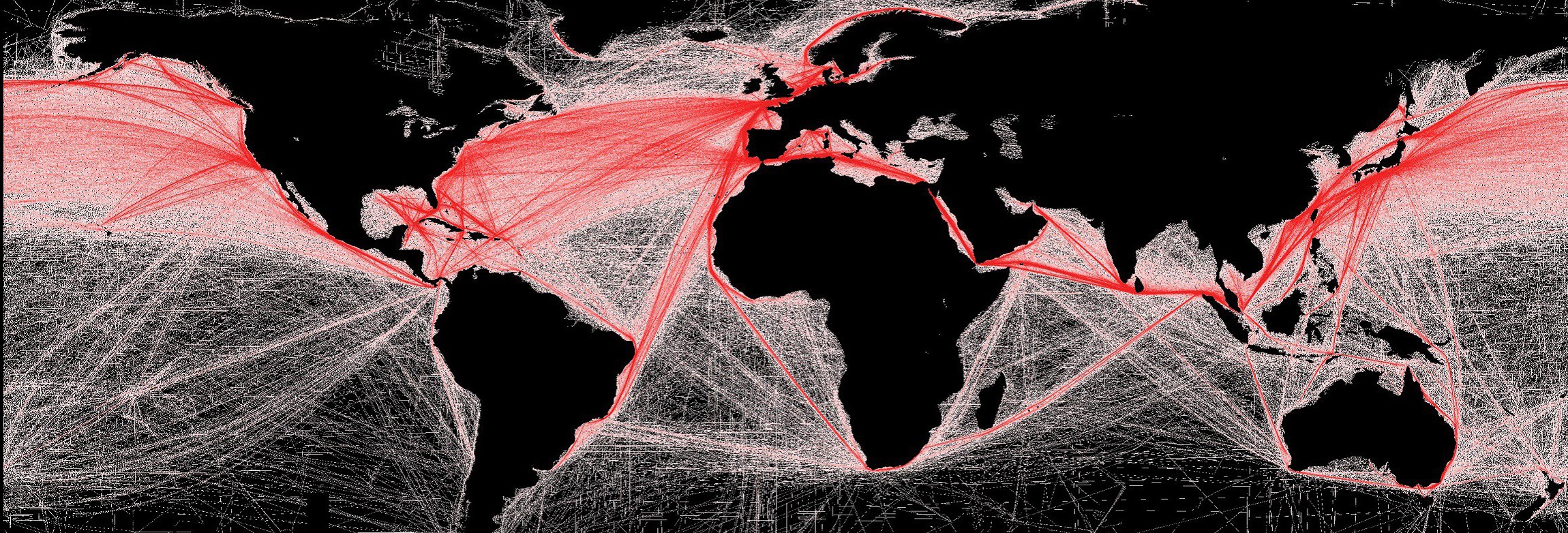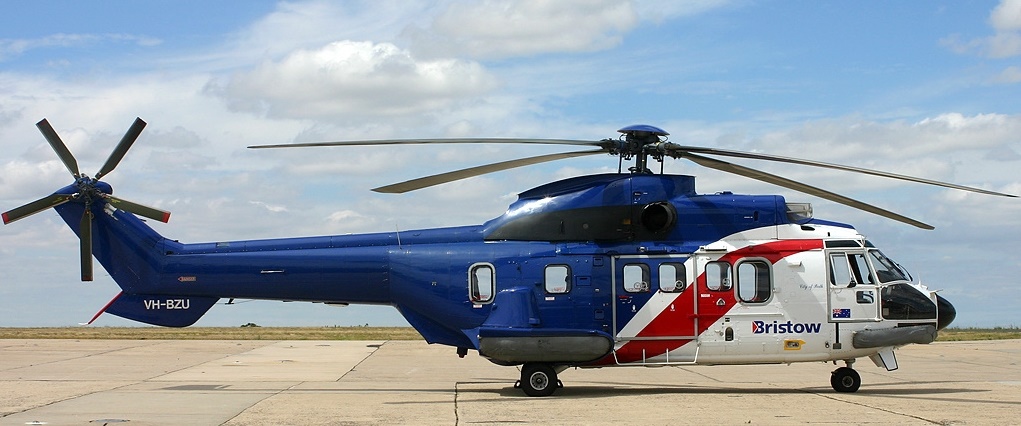When Was the First Stop Sign Invented?
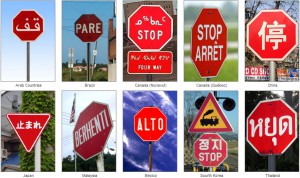
Stop Signs From Around the Globe
When Was the First Stop Sign Invented?
Stop signs originated in Michigan in 1915. The first ones had black lettering on a white background and were 24 by 24 inches (61 cm × 61 cm), somewhat smaller than the current sign. As stop signs became more widespread, a committee supported by the American Association of State Highway Officials (AASHO) met in 1922 to standardize them, and selected the octagonal shape that has been used in the United States ever since. The unique eight-sided shape of the sign allows drivers facing the back of the sign to identify that oncoming drivers have a stop sign and prevent confusion with other traffic signs. It was also chosen so that it could be identified easily at night, since the original signs were not reflective. The National Conference on Street and Highway Safety (NCSHS), a group competing with AASHTO, advocated a smaller pink-on-yellow stop sign. These two organizations eventually merged to form the Joint Committee on Uniform Traffic Control Devices, which in 1935 published the first Manual on Uniform Traffic Control Devices for Streets and Highways (MUTCD) detailing the stop sign’s specifications.
The MUTCD stop sign specifications were altered eight times between 1935 and 1971, mostly dealing with its reflectorization and its mounting height. From 1924 to 1954, stop signs were made with a black stoplegend on a yellow field. In 1954, the sign gained its current white legend/red field color configuration. Red signifies stop on traffic signals, so this specification unified red as a stop signal whether indicated by sign or by light. The mounting height reached its current level of 7 ft (2.13 m) in 1971; previously, stop signs were typically mounted 2–3 feet (0.61–0.91 m) above the ground.
The already-widespread use of the MUTCD stop sign became law in the United States in 1966. In 1968, this sign was adopted by the Vienna Convention on Road Signs and Signals as part of United Nations Economic Commission for Europe’s effort to standardize road travel across borders. The Convention specifies that ‘stop’ be written in English or the national language and allows an alternative circular yellow sign. Many European countries are party to the Convention. English-speaking countries, the exception being India, are not party to the Convention but usually use the red octagonal stop sign per their own standards, like the MUTCD. Even in countries not associated with either standard mentioned above the red octagonal stop sign is often used. Unique types of stop signs may be still be observed in countries like Japan.
Stop signs are often used in North America to control conflicting traffic movements at intersections that are not busy enough to justify the installation of a traffic signal or roundabout. In the United States, the stop sign is not intended for use as a traffic calming device; it is meant to be installed mainly for safety and/or to assign right-of-way for a certain direction. Nevertheless, in the United States, Mexico and Canada, stop signs are commonly deployed as supposed safety measures in residential areas and near places where children play or walk (such as schoolyards), or that experience frequent automobile accidents, making extra precautions necessary. Stop signs may be erected on all intersecting roads, resulting in three- and four-way stops. However, studies have confirmed that stop signs do not offer measurable safety benefits over the Yield approach adopted in the countries listed above based on original European research dating back many decades.
More recently, Georgia Traffic Engineer Martin Bretherton Jr. reviewed over 70 technical papers to find that multi-way stop signs do not typically control traffic speeds, and can create a variety of problems, including liability issues, traffic noise, pollution, enforcement problems and poor stop compliance when drivers feel that the signs have no justification. Fifteen studies found that unwarranted multi-way stops actually increased speed away from intersections as motorists try to make up lost time spent at “unnecessary” stop signs. Multi-way stop signs impose high vehicle operating costs, longer than needed travel times, excessive fuel consumption and increased vehicle emissions.
Researchers also found that safety of pedestrians (especially small children) may sometimes be actually decreased. Pedestrians expect vehicles to stop, but many drivers run the “unnecessary” signs. Engine exhaust, brake, tire and aerodynamic noise may all increase as cars brake and then accelerate up to speed. While the initial cost of installing stop signs is low, enforcement costs can be prohibitive, and one 1990 study estimated extra travel costs per intersection as $210,061/year.[12] Finally, where unwarranted multi-way stops have been successfully removed with public support, results have included improved compliance at justified stop signs.
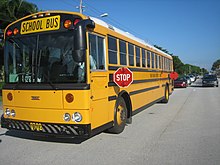
American school bus with folding stop signs

